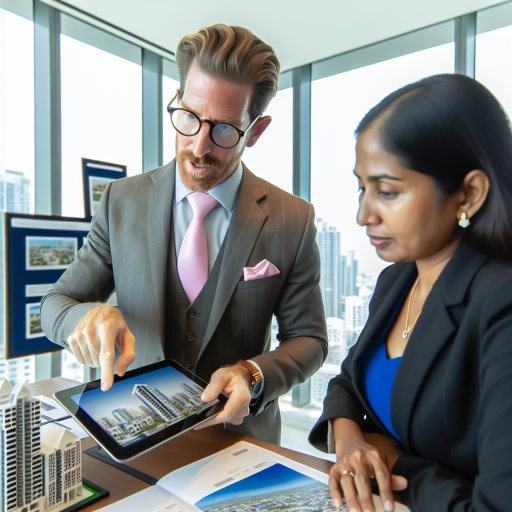Introduction:
A restaurant manager’s leadership style plays a crucial role in the success of the establishment.
Effective leadership is essential for motivating staff, ensuring smooth operations, and providing exceptional customer service.
There are various leadership styles that can be effective in a restaurant setting, each with its own strengths and weaknesses.
It is important for restaurant managers to understand these different styles and choose the one that best fits their management approach and the needs of their team.
Transformational Leadership Style:
Transformational leadership is a style that focuses on inspiring and motivating team members to achieve higher levels of performance and reach their full potential.
This leadership style involves developing a vision for the team and then empowering and encouraging team members to work towards that vision.
Characteristics of Transformational Leadership Style:
- Charismatic and inspiring leaders who have a clear vision for the future.
- Emphasis on creating a positive work environment and building strong relationships with team members.
- Encouraging creativity and innovation by challenging team members to think outside the box.
- Individualized consideration, where leaders provide support and feedback to each team member based on their needs and strengths.
- Intellectual stimulation, encouraging team members to question assumptions and think critically.
How Transformational Leaders Inspire and Motivate Their Teams:
Transformational leaders inspire and motivate their teams by setting high expectations and providing a sense of purpose and direction.
They communicate their vision to team members in a compelling and persuasive way, making it easy for team members to buy into the vision.
By empowering team members and fostering a positive work environment, transformational leaders create a sense of belonging and ownership among team members, leading to higher levels of engagement and motivation.
Examples of Successful Transformational Leaders in the Restaurant Industry:
- Danny Meyer, the founder of Union Square Hospitality Group, is known for his transformational leadership style.
- He is a charismatic leader who focuses on creating a positive work environment and building strong relationships with his team members.
- Alice Waters, the founder of Chez Panisse restaurant, is another example of a successful transformational leader in the restaurant industry.
- She is known for inspiring creativity and innovation among her team members, challenging them to think outside the box and strive for excellence.
- Thomas Keller, the chef and owner of The French Laundry, is also recognized for his transformational leadership style.
- He is known for providing individualized consideration to his team members, offering support and feedback based on their unique strengths and needs.
Transformational leadership style can be highly effective in the restaurant industry, as it promotes collaboration, creativity, and motivation among team members.
This ultimately leads to greater success and satisfaction within the organization.
Servant Leadership Style:
- Definition of servant leadership and its focus on serving others
- How servant leaders prioritize the needs of their team and customers
- Benefits of implementing a servant leadership style in a restaurant setting
Definition of Servant Leadership
Servant leadership is a leadership style that focuses on serving others rather than being served.
It emphasizes empathy, humility, and putting the needs of others before one’s own.
Focus on Serving Others
Servant leaders prioritize the needs of their team members and customers above their own.
They listen actively, offer support, and strive to create a positive work environment where everyone can thrive.
Prioritizing Team and Customer Needs
In a restaurant setting, a servant leadership style can lead to improved employee morale, higher job satisfaction, and better customer service.
By putting the needs of their team first, restaurant managers can create a harmonious work environment where employees feel valued and motivated to perform their best.
This, in turn, translates to better service for customers, as happy and engaged employees are more likely to provide exceptional service and ensure a positive dining experience.
Benefits of Implementing a Servant Leadership Style
There are numerous benefits to implementing a servant leadership style in a restaurant setting.
Some of the key advantages include:
Transform Your Career Today
Unlock a personalized career strategy that drives real results. Get tailored advice and a roadmap designed just for you.
Start Now- Increased Employee Morale: When employees feel valued and supported, they are more motivated to excel in their roles. This can lead to increased job satisfaction and decreased turnover rates.
- Enhanced Customer Service: Happy and engaged employees are more likely to go above and beyond to provide exceptional service to customers. This can result in higher customer satisfaction rates and repeat business.
- Improved Team Collaboration: Servant leaders foster a sense of teamwork and collaboration among their employees. By prioritizing the needs of the team, managers can create a supportive work environment where employees feel empowered to work together towards common goals.
- Greater Employee Engagement: Servant leaders encourage open communication, feedback, and participation from their team members. This can lead to increased employee engagement, as employees feel heard and valued in the decision-making process.
- Positive Organizational Culture: By promoting values such as empathy, humility, and teamwork, servant leaders can cultivate a positive organizational culture where employees feel respected, supported, and motivated to succeed.
Implementing a servant leadership style in a restaurant setting can have a significant impact on employee morale, customer service, team collaboration, employee engagement, and organizational culture.
By prioritizing the needs of their team members and customers, restaurant managers can create a positive work environment where everyone can thrive and contribute to the overall success of the business.
You Might Also Like: Most Common Mistakes New Casino Dealers Make
Autocratic Leadership Style:
Description of autocratic leadership style and its unique characteristics.
- An autocratic leadership style is characterized by a leader who makes decisions without seeking input from others.
- The leader holds all the power and authority, with little to no involvement from team members.
- Communication flows from the top down, with strict guidelines and rules to be followed.
- Decisions are made quickly and decisively, with a focus on achieving objectives efficiently.
The pros and cons of using an autocratic leadership style in a restaurant environment.
- Pros:
- Clear direction and decision-making, leading to swift actions and results.
- Efficiency in operations, as there is no time wasted on debates or discussions.
- Works well in crisis situations where immediate action is needed to resolve issues.
- Cons:
- Lack of employee engagement and motivation, leading to low morale and turnover.
- Limited creativity and innovation, as team members may feel stifled and not empowered.
- Potential conflict and tension among staff members due to lack of collaboration and input.
Examples of when autocratic leadership may be necessary in restaurant management.
- During emergency situations such as a kitchen fire or a sudden health code violation.
- When there is a need for quick decision-making to handle customer complaints or service issues.
- In situations where strict adherence to policies and procedures is required for safety or legal compliance.
- When implementing major changes or restructuring within the restaurant, requiring top-down direction.
While autocratic leadership can be effective in certain situations, it is important for restaurant managers to strike a balance and adapt their leadership style based on the specific needs of the team and the situation at hand.
You Might Also Like: Key Skills for Successful Restaurant Managers
Laissez-faire Leadership Style:
- Explanation of laissez-faire leadership style and its hands-off approach
- How laissez-faire leaders empower their team members to make decisions
- When to use a laissez-faire leadership style in a restaurant setting
Explanation of Laissez-faire Leadership Style:
The laissez-faire leadership style is characterized by a hands-off approach where leaders give their team members the freedom to make decisions on their own.
This style is based on trust in the team’s abilities and allows for autonomy and independence.
How Laissez-faire Leaders Empower Their Team Members:
Laissez-faire leaders empower their team members by providing them with the autonomy to make decisions and take ownership of their work.
This approach can boost morale, creativity, and innovation within the team.
When to Use a Laissez-faire Leadership Style in a Restaurant Setting:
The laissez-faire leadership style can be effective in a restaurant setting when team members are experienced, skilled, and self-motivated.
It is best suited for situations where creativity and innovation are encouraged, such as in upscale or fine dining establishments.
By empowering team members to make decisions and take ownership of their work, managers can foster a culture of creativity and innovation.
This culture can lead to improved performance and customer satisfaction.
Gain More Insights: How to Improve Customer Service as a Delivery Driver
Situational Leadership Style:
Situational leadership is a management approach where leaders adapt their style based on the current circumstances.
Transform Your Career Today
Unlock a personalized career strategy that drives real results. Get tailored advice and a roadmap designed just for you.
Start NowIt recognizes that one leadership style may not fit all situations.
Effective leadership requires flexibility and adaptability.
Leaders who practice situational leadership are skilled at assessing the needs of their team.
They adjust their approach accordingly.
Different situations may require different leadership styles.
These leaders are willing to modify their behavior to best meet the needs of their team members.
For example, in a fast-paced restaurant environment, a manager may need to be more directive and decisive.
This ensures smooth operations during peak hours.
On the other hand, during slow periods, they may take on a more hands-off approach.
This allows their team members more autonomy.
By recognizing the unique dynamics of each situation, situational leaders can effectively guide their team to success.
They provide the right level of support and direction when needed.
This ultimately leads to improved performance and morale within the restaurant.
Situational leadership is a valuable tool for restaurant managers to master.
Being adaptable and flexible in their approach allows leaders to better meet the needs of their team.
This helps them navigate the ever-changing demands of the restaurant industry.
See Related Content: How to Choose the Best Vehicle for Food Delivery

Communication Skills:
Communication skills are vital for a restaurant manager in ensuring smooth operations and customer satisfaction.
Effective communication promotes teamwork, boosts employee morale, and creates a positive work environment.
Restaurant managers must be able to communicate clearly and effectively with staff to delegate tasks, provide feedback, and address any issues that may arise.
Transform Your Career Today
Unlock a personalized career strategy that drives real results. Get tailored advice and a roadmap designed just for you.
Start NowDifferent leadership styles can impact how a restaurant manager communicates with both staff and customers.
For example, an authoritarian manager may use a commanding tone, which can lead to fear and resentment among employees.
On the other hand, a transformational leader may inspire and motivate employees through open and honest communication.
Tips for improving communication skills as a restaurant manager include active listening, being approachable, providing constructive feedback, and fostering a culture of transparency.
Managers should also seek feedback from both employees and customers to continuously improve their communication skills.
Effective communication is an essential skill for restaurant managers to succeed in their roles.
By mastering communication skills and adapting their leadership style to fit the needs of their team, managers can create a positive and productive work environment for both employees and customers.
Team Building Strategies:
- Strategies for building a strong and cohesive team in a restaurant setting
- How different leadership styles can influence team dynamics and morale
- The role of team building in supporting effective leadership styles
Importance of Team Building in a Restaurant
Team building in a restaurant is crucial for the success of the business.
A strong and cohesive team can work together efficiently and effectively, leading to better customer service and overall satisfaction.
In a fast-paced and high-pressure environment like a restaurant, teamwork is essential to ensure smooth operations and maintain a positive work culture.
Strategies for Building a Strong Team
Communication: Open and transparent communication is key to building trust among team members.
Encourage open dialogue, active listening, and feedback sessions to foster a culture of collaboration.
Empowerment: Empower your team members by giving them autonomy and ownership over their tasks.
This not only boosts their confidence but also encourages accountability and initiative.
Recognition: Regularly recognize and appreciate the efforts of your team members.
Acknowledging their hard work and dedication motivates them to perform better and strengthens their commitment to the team.
Training and Development: Invest in training programs to enhance the skills and knowledge of your team.
Continuous learning and development opportunities not only improve performance but also foster a sense of growth and progress among team members.
Impact of Leadership Styles on Team Dynamics
Different leadership styles can greatly influence team dynamics and morale in a restaurant setting.
Let’s explore the impact of some common leadership styles:
Transform Your Career Today
Unlock a personalized career strategy that drives real results. Get tailored advice and a roadmap designed just for you.
Start NowAutocratic Leadership: In this style, the manager makes decisions without consulting the team.
While this can be effective in certain situations, it may lead to resentment and low morale among team members.
Democratic Leadership: In contrast, democratic leadership involves collaborative decision-making and input from team members.
This approach fosters a sense of ownership and engagement, leading to better team dynamics and morale.
Transformational Leadership: Transformational leaders inspire and motivate their team towards a common vision.
By setting high expectations and providing support, they can create a positive work environment that encourages innovation and growth.
Role of Team Building in Supporting Effective Leadership
Team building plays a crucial role in supporting effective leadership styles in a restaurant.
By building a strong and cohesive team, managers can effectively implement their leadership strategies and achieve the following:
Improved Communication: A team that communicates openly and effectively can better understand and execute the manager’s vision and goals.
Enhanced Morale: A positive work environment created through team building activities can boost team morale and motivation.
This leads to higher productivity and job satisfaction.
Increased Collaboration: Team building fosters collaboration and teamwork.
This enables team members to work together seamlessly towards common objectives.
Effective Restaurant Manager Leadership Styles
Effective restaurant managers understand the importance of adapting their leadership style to fit different situations.
One common leadership style in restaurants is the participative approach, where managers involve their team in decision-making processes.
Another effective leadership style is the transformational approach, where managers inspire and motivate their team to achieve shared goals.
Some managers prefer the autocratic leadership style, where they make decisions without input from their team members.
Regardless of the leadership style, communication is key for restaurant managers to effectively lead their teams.
Effective restaurant managers also prioritize team development and training to improve overall performance and customer satisfaction.
Being able to adapt and switch between different leadership styles depending on the situation is crucial for success.
Transform Your Career Today
Unlock a personalized career strategy that drives real results. Get tailored advice and a roadmap designed just for you.
Start NowUltimately, a combination of leadership styles may be necessary to effectively manage a restaurant and lead a team to success.
Implications of Effective Leadership Styles
Effective leadership styles in restaurant management play a crucial role in the success of the establishment.
It is important for managers to explore and experiment with different leadership styles to find what works best for each individual and their team.
Additional Resources
Opinion | In Praise of Middle Managers – The New York Times
Which Restaurant Management Style Are You?
[E-Books for Sale]
The Big Book of 500 High-Paying Jobs in America: Unlock Your Earning Potential
$19.99 • 500 High-Paying Jobs • 330 pages
Explore 500 high-paying jobs in America and learn how to boost your career, earn more, and achieve success!
See All 500 High-Paying Jobs of this E-Book
1001 Professions Without a Degree: High-Paying American Jobs You Can Start Now
$19.99 • 1001 Professions Without a Degree • 174 pages
Discover 1001 high-paying jobs without a degree! Unlock career tips, skills, and success strategies for just $19.99!




